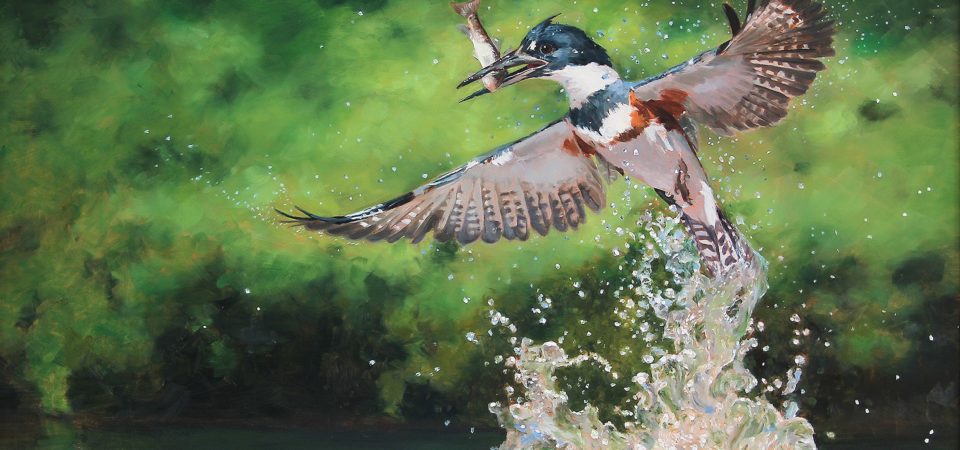Artists may travel abroad for stimulation to start their work. Drawing inspiration from the world in which I live, that being a rural agricultural community in Wisconsin, is how I find my voice. I believe it was Jacques Maritain who wrote that “beauty is rare.” I disagree with that viewpoint. I believe beauty is everywhere but during our daily rush of life, it is often ignored or not even perceived. Looking for loveliness is what motivates my art. Finding the resplendent in what most would consider the ordinary is what compels me to step into my studio. The juxtaposition of hues, textures, light, and shadows on the canvas or panel allows me to tell my story. The one thing that unites my varied styles, mediums, and subject matter is color. I take great joy in sharing the beauty of which I see.
Agriculture here in Wisconsin, as well as worldwide, has been moving to an industrial model which increasingly excludes humans or wildlife and changes the landscape. It reduces natural plant life in exchange for vast fields of crops. The degradation of the environment is readily apparent when one observes streams and rivers flowing through modern agricultural areas. During times of heavy rainfall, these conduits of the earth’s water cycle serve as transportation vehicles for vast quantities of topsoil with its nutrients along with the chemicals that have been applied. How then, is beauty found in this changing environment?
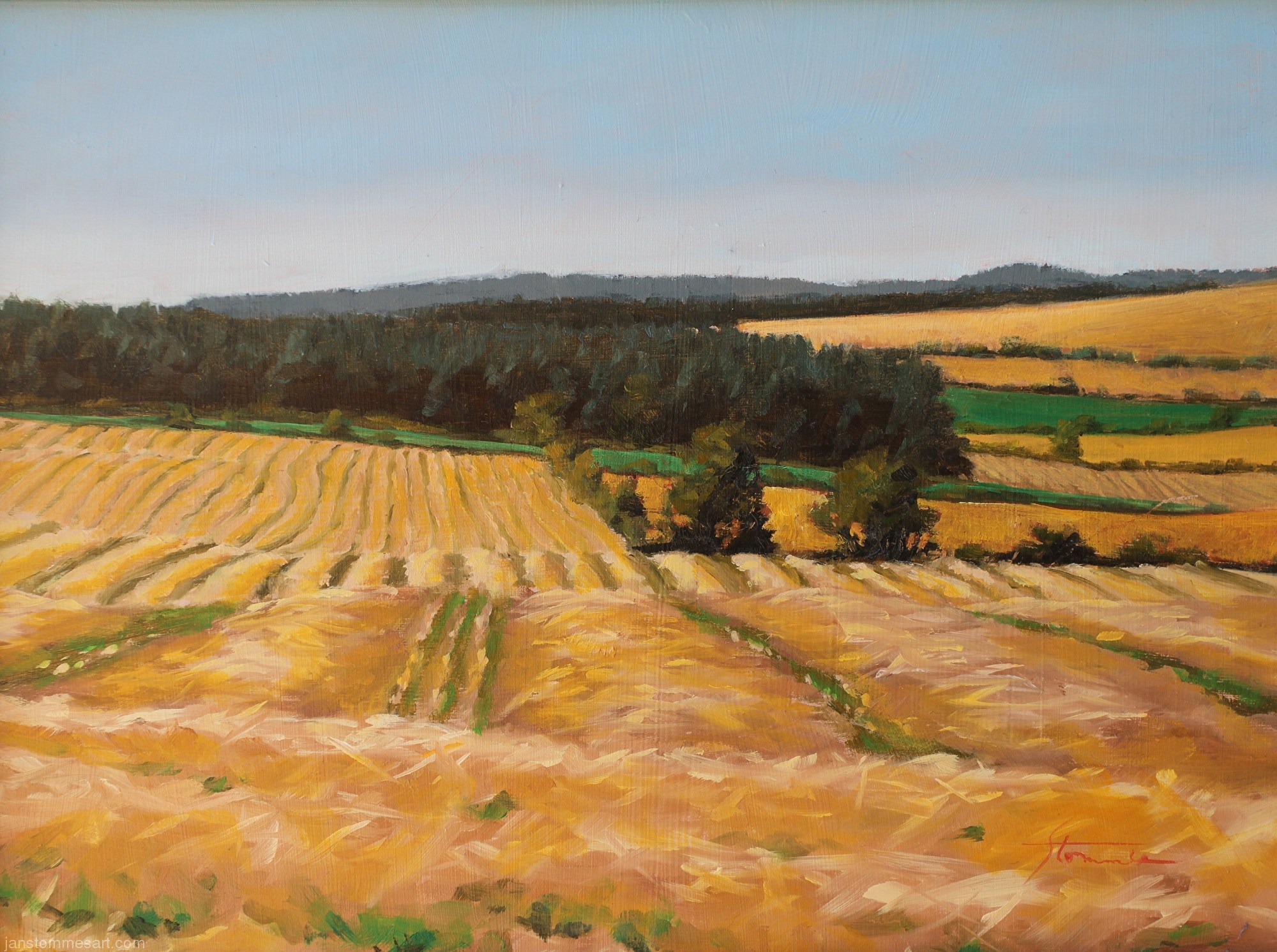
Portraying magnificence in the ordinary may make people pause to see what was previously unseen. Recognizing the snippets of splendor around me and transforming those fleeting moments into a record is one of my goals. Complementary colors, the juxtaposition of different textures, and utilizing the forms of the shapes of animals to make an interesting composition are my starting points. Being cognizant that I need to make viewers of my work feel something, is omnipresent. Do they have a fond memory from childhood that is reawakened? Are they curious about the interplay of the animals depicted? Are they filled with wonder about an animal of which they have never seen? Does the painting make them want to learn more?
In art museums in Europe, I observed paintings that showed how the towns, landscapes, and animals changed over the centuries. Beauty was found in a snapshot of time that was created without a camera or computer. A canvas records my impressions of current agricultural practices. What will the future of agricultural practices look like in the paintings of centuries to come?
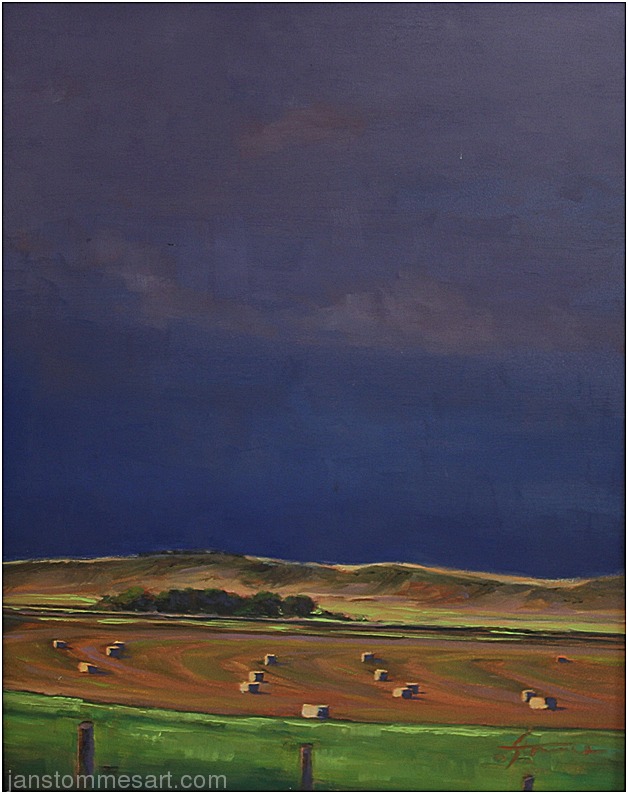
Capturing beauty is not the only purpose of my art. To commemorate the declining structure of the “old way” of agriculture, which laid a gentle footprint on the land, is also my intention. Farms and fields were once small and fragmented which allowed the practice of crop and animal production without degrading the natural safeguards.
Fortunately, some of that “old way” remains for me to capture and freeze in time with my artwork. However, modern industrialized agriculture also provides vistas that inspire. The undulations of vast fields of monoculture crops display shadowed abstracts of color. Beauty is there in the tranquil landscape.
Art is a record of the reality around the artist or chronicles authenticity modified by the creative fire. Making my paintings an interactive experience for the viewers reflects this.
In my youth, I became a scientist. After completing my undergraduate studies in animal science and graduate school for physiology, I stayed home with our three young sons. My love of design that started when I was a child led to me dipping my toes into the stream of artistic expression while the children napped. As they grew, so did my quest for knowledge in a world in which I was not trained. Thankfully, I found many books in the library to aid me in my search. The nearby Woodson Art Museum allowed me to see original artwork so that I could study the brushstrokes that other artists used. Being a self-taught artist was the result of relentless pursuit. Being a scientist has had a synergistic effect on my creative world. Both areas complement each other.
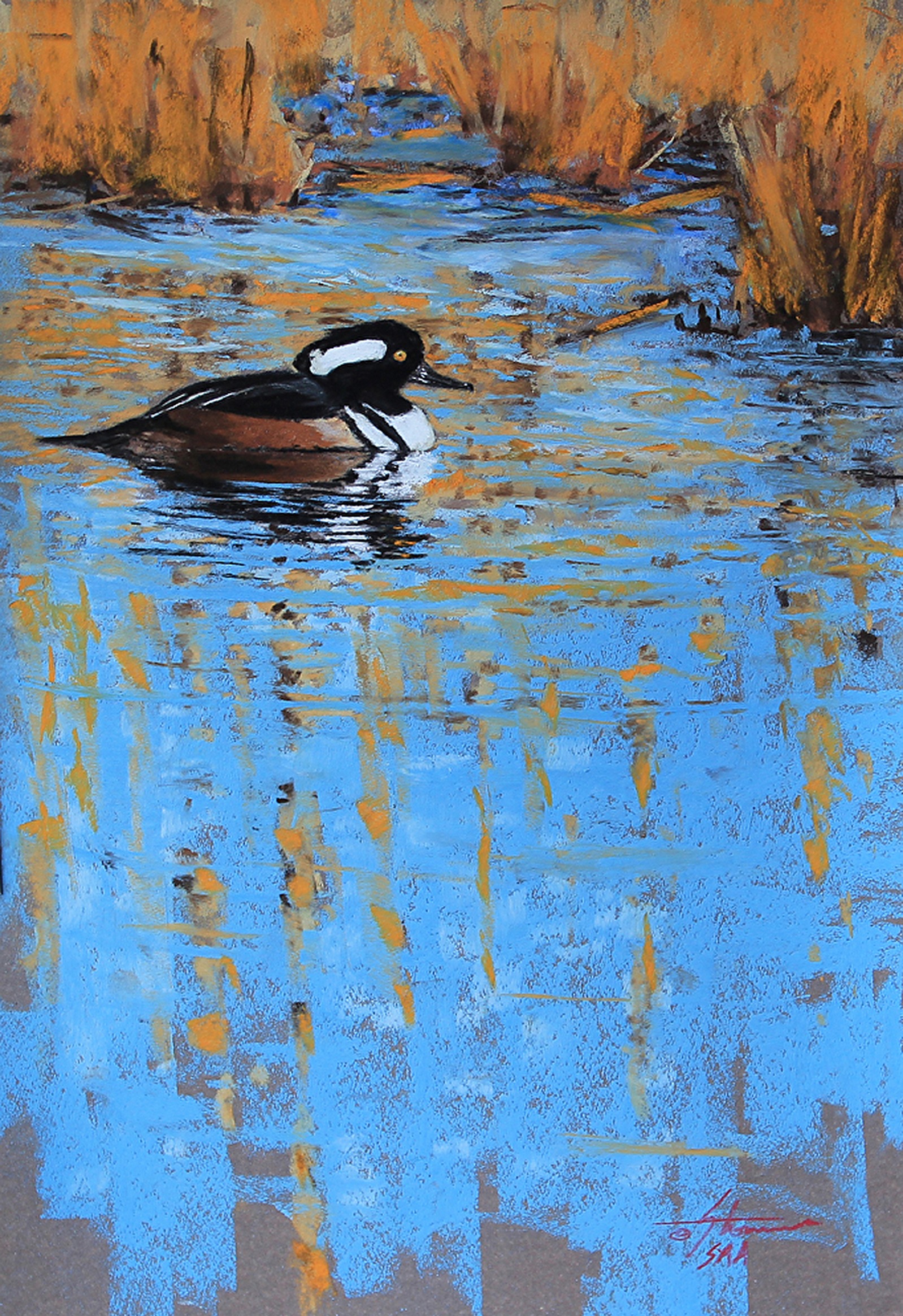
Falling through a convoluted path led me to teach high school sciences for several years of my life. Painting continued, often creating works during study hall supervision. During that time, I found out how little my students knew about the natural world yet were eager to learn. When I left teaching, I wrote my first children’s book, “Grandma and Grandpa are trapped in the computer” on the plane trip home from visiting our son and his family in California. At that time, he was in the Decision Risk Analysis Ph.D. program at Stanford. The inspiration for that book came from something that our granddaughter said to me during our visit.
Next, I wrote and illustrated a children’s books series about Curiously Captivating Creatures that are written in a poetic or limerick format. My prior high school advanced biology students were fascinated by marsupials and monotremes, so I started creating books featuring these unique animals as well as books about the flora and fauna in various biomes. My husband, Richard, then initiated the joint effort for our Baby Calves Adventure Series children’s books. Richard is the co-owner of an agriculture business. His clients enjoy having their cattle captured on canvas. The objective of this project is to inform the public about the appeal of small-scale local agriculture and contrast it with wildlife in the natural world. Hopefully, the books will inspire children to learn more about the fauna on our planet. The Baby Calves Adventure Series children’s picture books are unique in that they utilize fine art instead of the illustrative style that I use in my Curiously Captivating Creatures series.
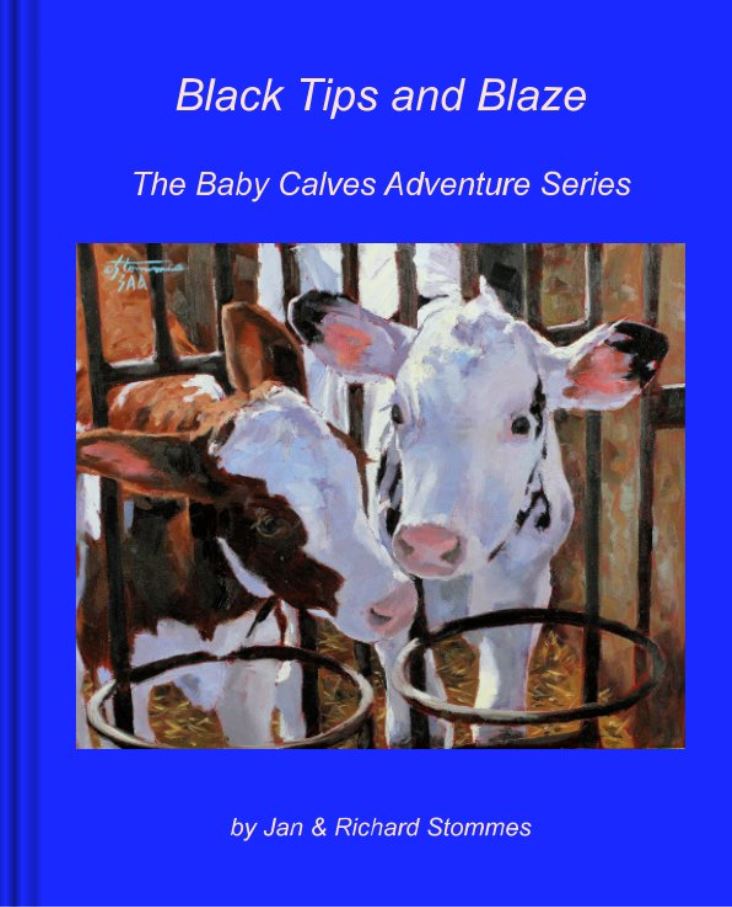
Our book project has become a way to share my fine art with children, many of whom may not have ever visited an art museum. Paintings that have been juried into international and national shows have been included in our books. Children that may have little knowledge of the natural world due to where they live can learn about nature as well as the world of agriculture. My passion as a scientist, artist, and teacher is satisfied by revealing to children what they may have seen but not yet perceived.
Will these attempts have any measurable effect? Perhaps not, but many enterprises are initiated without any assurance of success. Every time I start a new painting, I have no guarantee that the finished piece will be to my liking or be a ‘success’, yet I constantly strive forward. I try something new with each piece that I create without a guarantee of “success”.
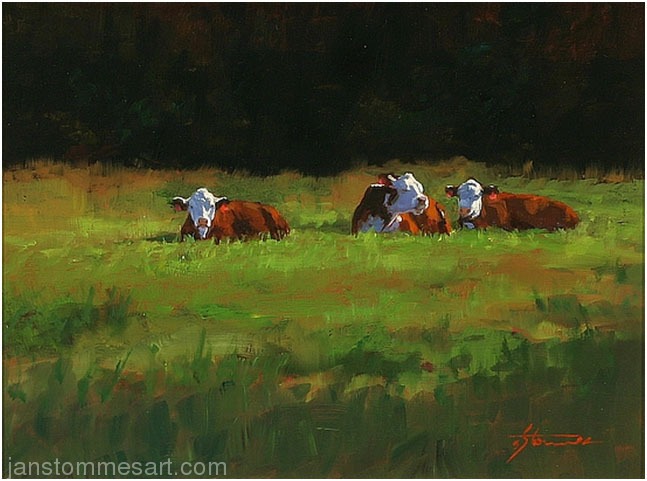
The artist, in a world where financial accounting rules, is resigned to receive less return than in nearly any other endeavor. Do I wish that I would have stayed in science, which is the more lucrative of my two passions? No, for although both fields require creativity, endurance, passion, and drive, painting has been extremely satisfying. I have endless possibilities to explore without the controls found in science that would dictate my boundaries. As I earlier stated, in the daily rush of life, the bounty of beauty is ignored or rarely even perceived. That is something that I try to correct with my paintings.
 Jan McAllaster Stommes is a self-taught artist whose work has evolved through a variety of styles which is consistent with her personality. She is an eclectic person who says she feels that her artwork should reflect the eclectic nature of her personality. Her academic studies provided training to be a research scientist (the University of Minnesota, Bachelor of Science in Animal Science; graduate studies in Reproductive Physiology) while the observational skills she developed proved useful later on for creating art. Like her style, Stommes’ subject matter has varied and her choice of medium evolved, too. Jan Stommes is a Signature Member of The Society of Animal Artists and is also a member of the International Guild of Realism, the Oil Painters of America, the Portrait Society of America, and the American Impressionists Society. In addition to her art, she has written, illustrated, and published several children’s books about science, humorous books with rhymes and illustrations intended to intrigue children about the marvels of science. She has also created a line of children’s books to teach coping skills for young students who suffer from dyslexia and dyscalculia. Jan McAllaster Stommes and her husband, Richard, own and operate an agricultural supply business in central Wisconsin.
Jan McAllaster Stommes is a self-taught artist whose work has evolved through a variety of styles which is consistent with her personality. She is an eclectic person who says she feels that her artwork should reflect the eclectic nature of her personality. Her academic studies provided training to be a research scientist (the University of Minnesota, Bachelor of Science in Animal Science; graduate studies in Reproductive Physiology) while the observational skills she developed proved useful later on for creating art. Like her style, Stommes’ subject matter has varied and her choice of medium evolved, too. Jan Stommes is a Signature Member of The Society of Animal Artists and is also a member of the International Guild of Realism, the Oil Painters of America, the Portrait Society of America, and the American Impressionists Society. In addition to her art, she has written, illustrated, and published several children’s books about science, humorous books with rhymes and illustrations intended to intrigue children about the marvels of science. She has also created a line of children’s books to teach coping skills for young students who suffer from dyslexia and dyscalculia. Jan McAllaster Stommes and her husband, Richard, own and operate an agricultural supply business in central Wisconsin.
ANIMAL GROUPS, An Exhibition Produced by David J. Wagner, L.L.C.
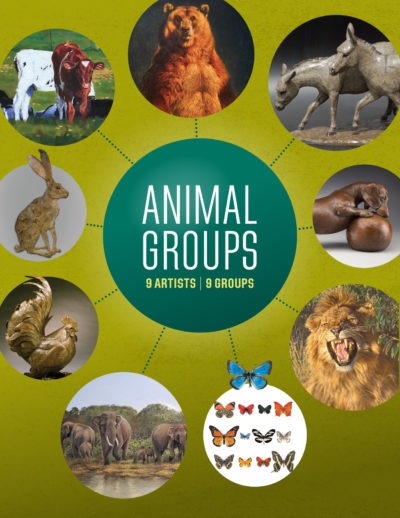
A group of farm paintings of Holstein calves, goats, Charolais beef cattle, chickens, and a portrait grouping by Jan McAllaster Stommes will be featured in a new, upcoming exhibition entitled Animal Groups, curated by David J. Wagner, Ph.D. The exhibition will premiere at The Hansen Museum in Kansas in the Summer of 2021 to celebrate the opening of its newly renovated building. The exhibit will feature 8 groups by 8 artists, each represented by five thematically related works to allow visitors to experience the breadth and depth of each artist’s treatment and and expression.
The MAHB Blog is a venture of the Millennium Alliance for Humanity and the Biosphere. Questions should be directed to joan@mahbonline.org

